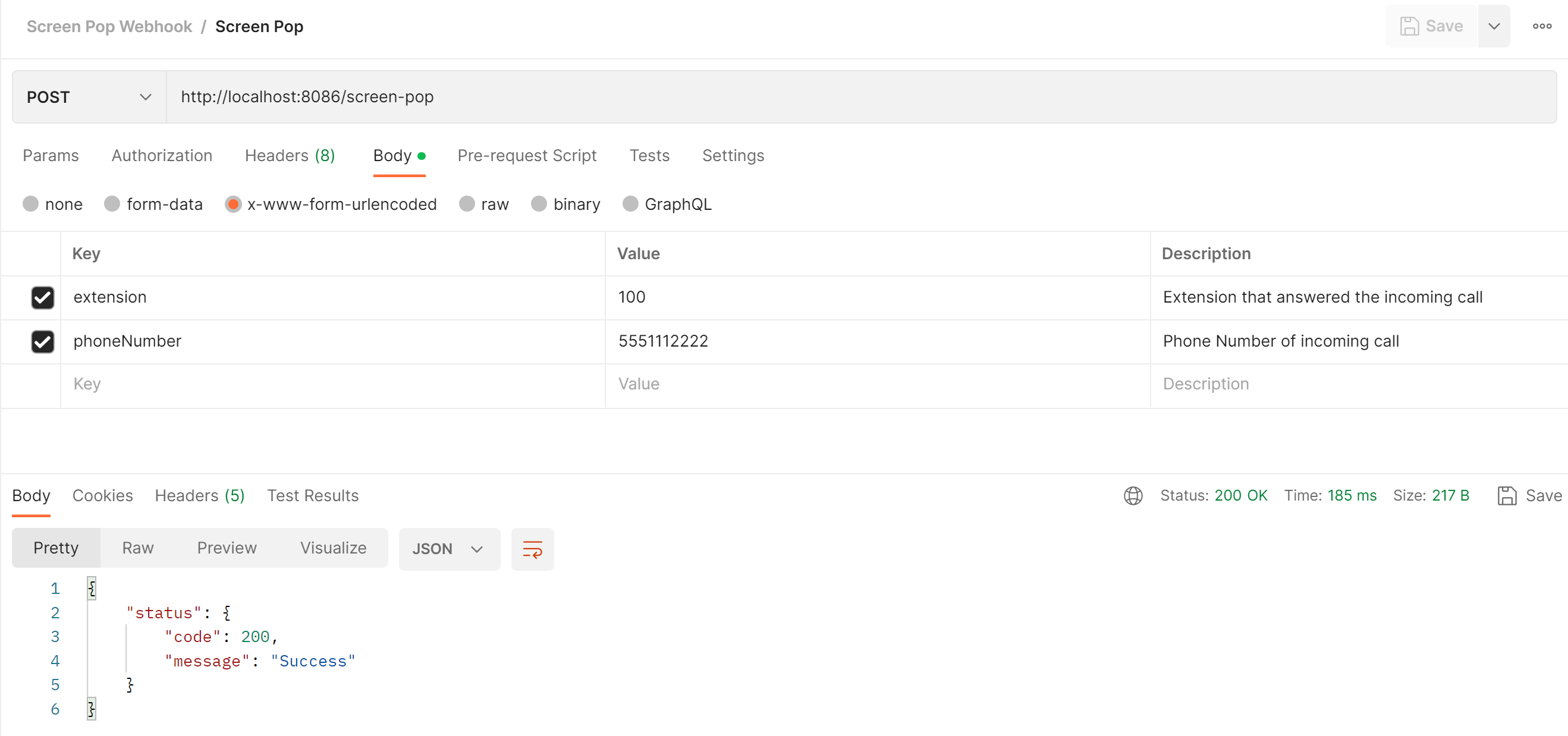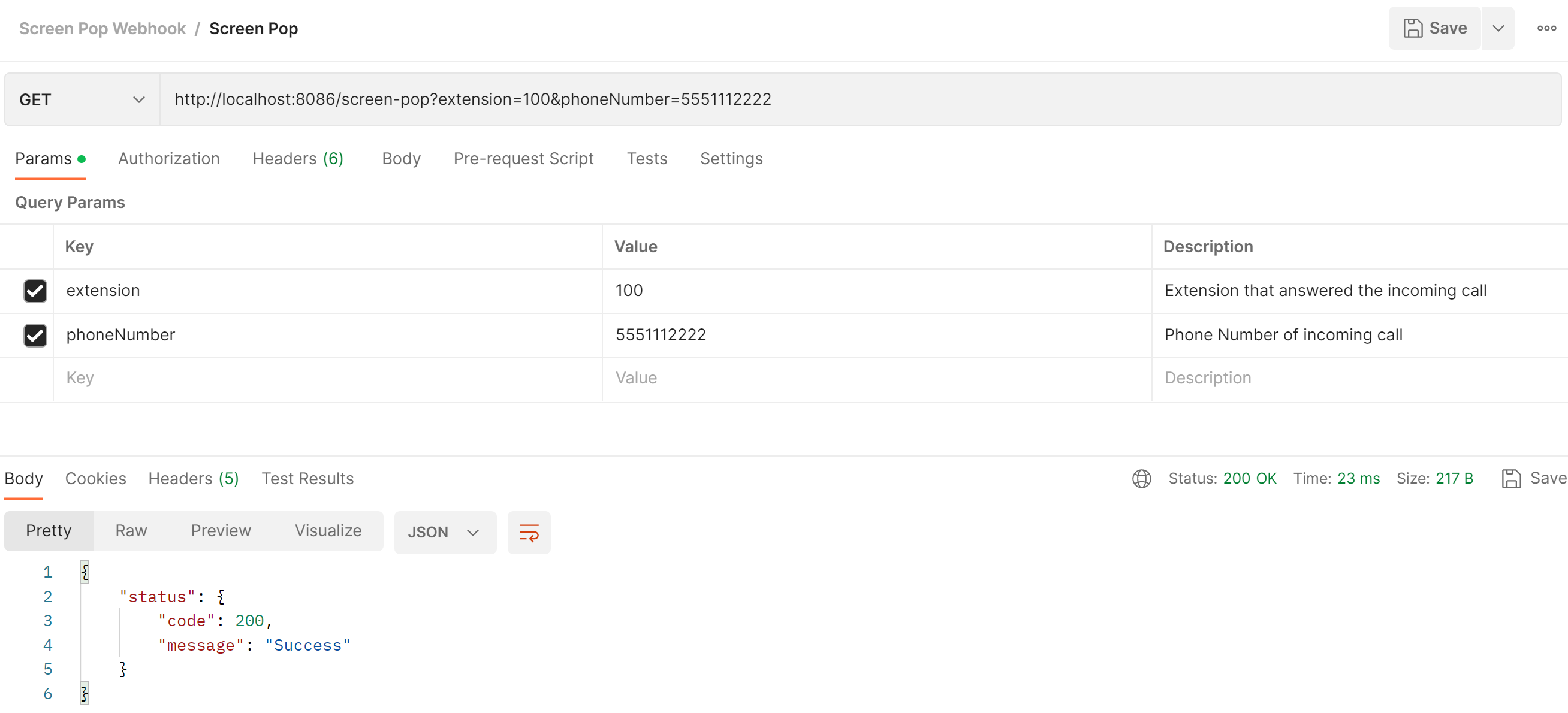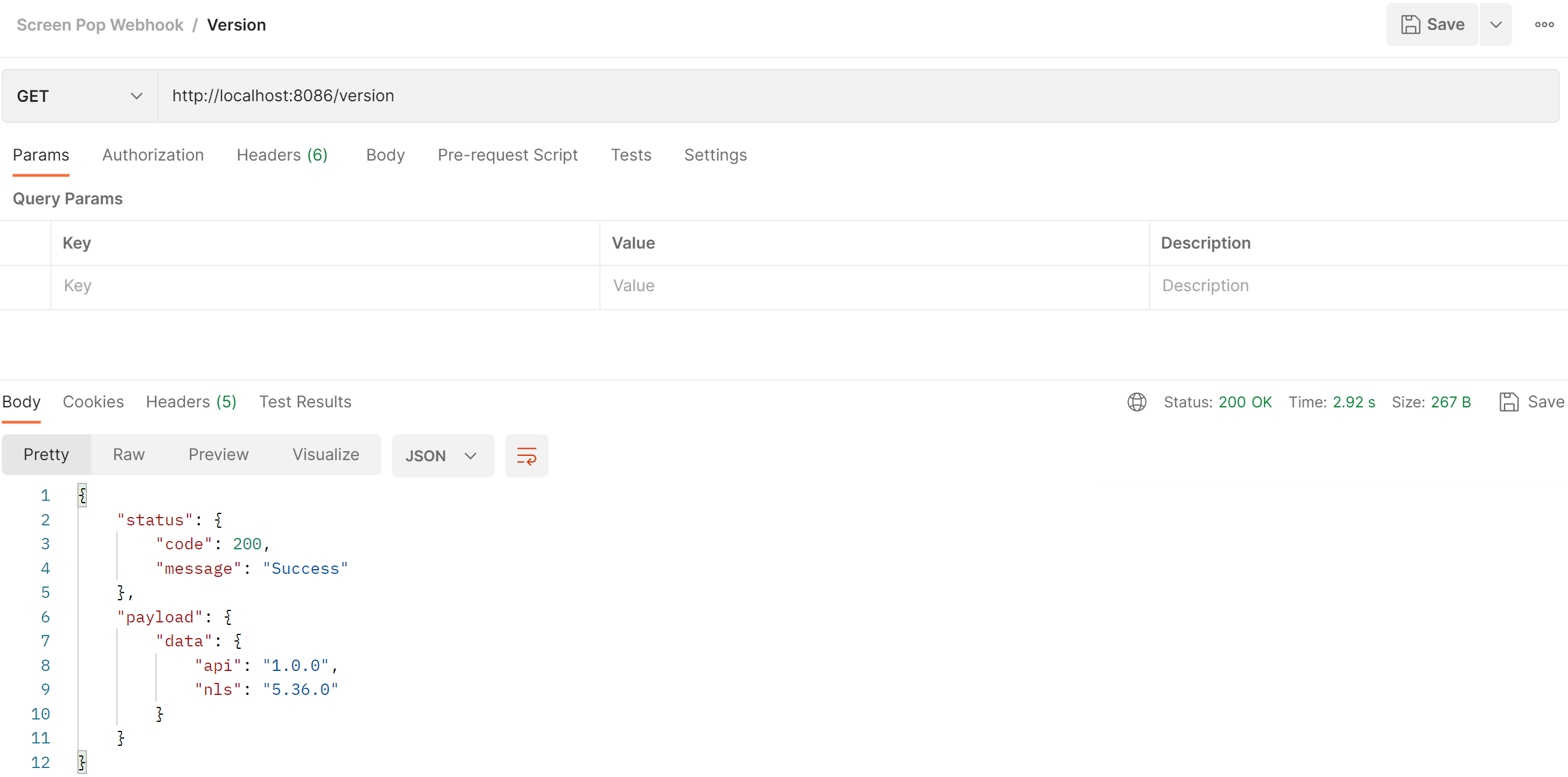Screen Pop Webhook
NLS 5.35 and later
For hosted clients, please contact Nortridge Support to have our infrastructure team set up your webhook.
Licensed users running NLS on their own database servers will need to install the webhook on their own servers following the instructions below. Please contact Nortridge Support to obtain the required Screen Pop Webhook files.
Installation
Step 1
Download and install the latest ASP.NET Core 6.0 Runtime Hosting Bundle for Windows.
Step 2
Copy the nsp.screenpop.webhook folder to the IIS root folder (typically C:\inetpub\wwwroot\).
Step 3
Open the appsettings.json file with a text editor.
Note
The text editor may need to be run as administrator to allow it to save the file.The unedited file should look like this:
Unedited appsettings.json
{
"ConnectionStrings": {
"Default": {
"ConnectionString": "",
"Type": ""
}
},
"Logging": {
"LogLevel": {
"Default": "Warning"
}
},
"AllowedHosts": "*"
}
For Microsoft SQL Server, add the following to the ConnectionString parameter where:
- Data Source = name of the database server;
- Initial Catalog = name of the database;
- User Id = username for the database;
- Password = password for username;
Set Type to MSSQL.
MSSQL appsettings.json
{
"ConnectionStrings": {
"Default": {
"ConnectionString": "Data Source=SERVER_NAME; Initial Catalog=DATABASE_NAME; User Id=DATABASE_USERNAME; Password=DATABASE_PASSWORD",
"Type": "MSSQL"
}
},
"IsMultiTenant": false,
"Logging": {
"LogLevel": {
"Default": "Warning"
}
},
"AllowedHosts": "*"
}
For Oracle, add the following to the ConnectionString parameter where:
- User ID = username for the database;
- Password = password for username;
- Data Source = Oracle TNS format or TNS alias;
Set Type to ORACLE.
Oracle appsettings.json
{
"ConnectionStrings": {
"Default": {
"ConnectionString": "User ID=DATABASE_USERNAME; Password=DATABASE_PASSWORD; Data Source=(DESCRIPTION=(ADDRESS=(PROTOCOL=tcp)(HOST=SERVER_NAME)(PORT=1521))(CONNECT_DATA=(SERVICE_NAME=ORACLE_SERVICE_NAME)))",
"Type": "ORACLE"
}
},
"IsMultiTenant": false,
"Logging": {
"LogLevel": {
"Default": "Warning"
}
},
"AllowedHosts": "*"
}
Save the changes.
Step 4
Open the Internet Information Service (IIS) Manager application. Right click on the Connections pane and select Add Website….
Enter the site name and specify the physical path to the nsp.screenpop.webhook folder.
Click Connect as… and specify credentials to use if needed.
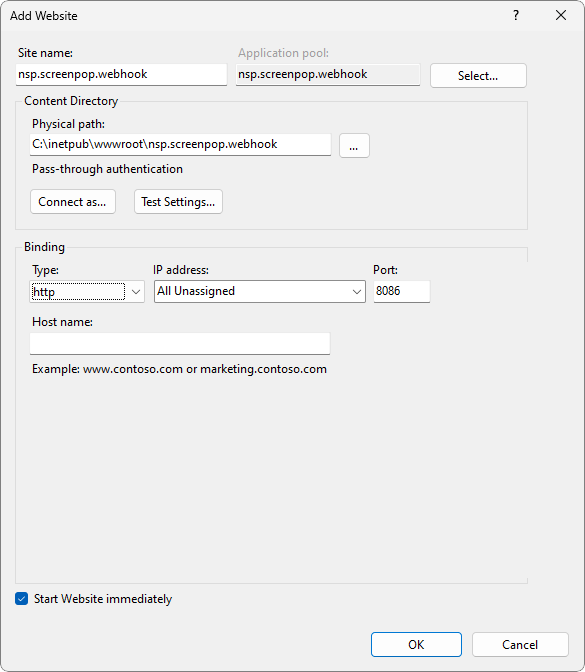
Step 5
Go to Application Pools and select nsp.screenpop.webhook. Click Advanced Settings… and set .NET CLR Version to No Managed Code and Start Mode to AlwaysRunning.
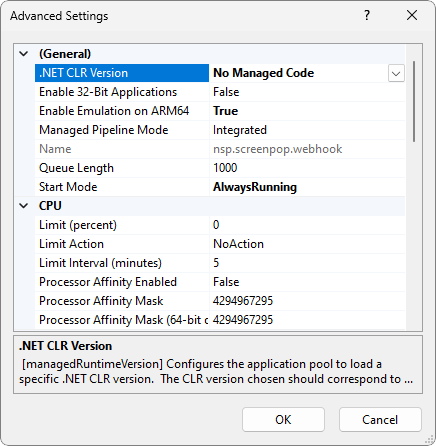
Step 6
Open http://localhost:8086/version in your web browser to verify that the webhook is running.
If the webhook is running successfully, you will see:
{"status":{"code":200,"message":"Success"},"payload":{"data":{"api":1.0.0,"nls":"5.35.0"}}}
The computer running the webhook must be publicly available and accessible from the Internet. Replace localhost with the IP number or domain name of where the computer is located and check that it can be accessed from outside your network.
Endpoints
/screen-pop
The /screen-pop endpoint is used to notify NLS of an incoming call that was answered by an NLS user. The NLS Setup > System > System Defaults > Query Notification > Enable Query Notification-Telephone Screen Pop setting will need to be enabled for NLS to pop the related loan on the screen of the NLS user matching the extension. The /screen-pop endpoint supports both POST and GET with an “extension” parameter and a “phoneNumber” parameter.
The /screen-pop endpoint will insert a row into the TelephoneScreenPop table with the TelephonyExtension, PhoneNumber, and EntryDate. After this row is inserted, the SQL server instance will notify NLS. NLS will then use the TelephonyExtensions to find the NLS user that answered the call and the PhoneNumber to determine the loan associated with the caller. That loan will then open in the NLS app instance associated with the NLS user that answered the call. Finally, the TelephoneScreenPop row will be deleted.
Examples of how to call the POST and GET endpoints are shown in the screenshots below.
GET /version
The GET /version endpoint is used to verify that the Webhook is running with the correct version and that the NLS Database connection is working.
